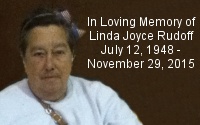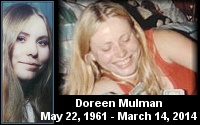| « "Extreme Ghostbusters" Episode Guide | Extreme Ghostbusters Books » |

by Chet Cooper, edited by Mark Grey
(Ability magazine, Special Issue -- Fall 1998)
copyright © 1998 Ability Magazine
All rights reserved.
New York City is under attack. Not from terrorists or rouge drug dealers but from ghoulish, green apparitions. And what is the Big Apple to do? Who are they gonna call? Why the Ghostbusters of course!
You remember the biggest hit movie of 1984. Even if you don't you will get a third chance to reestablish what I'm talking about during the summer of 1999. If you can't wait that long just log on to the Internet and search for "Ghostbusters" and you will find a plethora of sites devoted to the now classic film and its reincarnation in several more recent projects.
Little did the stars of the original, Dan Aykroyd, Bill Murray Ivan Reitman and Harold Ramis, know that they were creating an entertainment dynasty. With numerous rebirths from big-screen sequels, comic books, action figures, cartoons and now another feature film, Ghostbusters III on the way for a summer release - the franchise is witnessing new found popularity with a generation of children who were not even born for the original.
In its most recent television incarnation, the series has adopted a new quirk. Deciding that the characters were becoming a bit predictable and maybe even boring -- the producers of the new cartoon, Extreme Ghostbusters, decided that one of the protagonists would have a disability.
Produced by the same people who brought us The Real Ghostbusters, Extreme Ghostbusters is a nineties adaptation of the ghost fighting concept. In the cartoon the main character, Egon returns, as does the ghoulish Slimer. Joining them are the new faces; Eduardo, Kylie, Garrett, and Roland who are students enrolled in Dr. Egon Spengler's class on paranormal studies.
The four original Ghostbusters from the movie teamed up with the Extreme Ghostbusters at the end of the cartoons first season in the episode "Back in the Saddle".
We sat down with one of the creators of the new cartoon series and found out that the casting of an animated character with a disability had some interesting results for the show.
Chet Cooper: How did you get involved in animation?
Bob Higgins: I kind of fell into it. When I moved out here I had intended on working in TV but I always pictured myself doing one hour drama type stuff. I was working at Creative Artists as an assistant and one of the clients that we handled was a animation studio called Nelvana and they were looking for a development executive and gave me a call. I went over there and started doing development for them. The focus of that company was on kids animation so I did that for two and a half years there and had some great success and found that I really enjoyed it and it was something I did well, and then Sony. I met Sandra Schwarz who heads up this division and she ended up bringing me over to head up development over here.
CC: How was it that made the decision to convert Ghostbusters into a cartoon?
BH: Cartoons ... animations whatever. It was when they started this division over here, one of the strengths of the studio is that we had pre-sold properties with name value recognition and one of the strongest properties that they control is the Ghostbusters franchise. It had spawned two very successful animated series in the early to mid-eighties and they decided then that what they would do is kind of reinvent that and try and reinvigorate the franchise so it was one of the first things that the studio had basically set forth to tackle. So it was really a studio decision.
CC: As they kind of revamped Ghostbusters, how did it come about to bring a character into it that used a wheelchair?
BH: It wasn't something that we set out to do when we first said okay, we didn't sit down and go let's develop this show and let's make sure someone uses a wheelchair. We were "spit-balling" characters and trying to put together a team. What we decided to do was rather than putting together a team of this kind of typical, perfect X-Men superhero type of team, we put together a team of misfits in a way, people that you would not necessarily associate with being superheroes on television.
We ended up with a kind of slacker type and a kind of square, head in the clouds kind of guy and then we put a girl into the team and then we wanted someone who was really an adrenaline junkie someone who could kind of kick start the team. But that character really became kind of the blandest in a way where he was definitely the one that had all the "cool" attributes. He was the one that really lacked any subtext to his character and one of the producers that we were working with named Jeff Klein just kind of threw out the idea, "well what if we did something with him like we put him in a wheelchair or something." And it really just kind of clicked. It didn't change anything that we had been talking about because this character could still be an adrenaline junkie, he still could be an extreme sports enthusiast, and he could still want to play for the Lakers. It really broadened him as a character and made him a much more interesting and stronger than if he would have been able-bodied and never really overcome anything to get what he had in life. He's one of these guys that takes what he is given and makes the best of it and really lives up to any potential that he has.
CC: I should probably say congratulations on winning the award from the Western Law Center.
BH: (Laughing) Thank you.
CC: When you gave your speech at the awards, you had mentioned something about the focus group studies that you did.
BH: Yes. We were doing forty episodes and after the first few ones we wanted to test them so that we could make sure that the later episodes would maximize what the kids liked about the show. So what we did is we screened it for a group of 30 kids -- girls and boys and different ages and things like that. Part of the whole focus group testing is they just kind of watch and they have these little dials and they'll turn them to the right or the left depending on if they like it or not like what's going on. After that we have a questions and answers session and ask them questions. It's kind of like, "What did you like about the show?", "What did you not like about the show?", "Which characters did you like?", "Which characters did you not like?", "What was cool?", "What was not cool?", those types of things. And so obviously one of the questions was which characters did you like, which character was your favorite and pretty much across the board, both boys and girls chose Garrett as their favorite character.
CC: Garrett being the lead character, who is using a wheelchair.
BH: Correct. And it was surprising because we thought that the girls would identify with the girl character or choose her as their favorite but they didn't. Everyone pretty much chose Garrett and I think it's because he really was the coolest and I think the most identifiable for kids. He was just one of these guys that really had a terrific attitude that I think drew the kids in that were watching to him. I think it's just a very positive type of character and I think that they really liked seeing that. And I think it's one of these things that, he never allows himself to kind of, he doesn't let other people tell him what he can or cannot do because of his disability. He really is one of these people that tries everything and does what he wants to do. And I think that how these kids approach life. Unless someone tells them that they can't do something, they really think that they can and they really will go all out to do that. So I think that is something they definitely related to with the Garrett character is that kind of sense of "I can do this".
CC: One of the things that you mentioned in your talk, you said they were also asked which one would you want to be?
BH: Yes and they chose Garrett. When they talked about the character they used his name, which you know makes an impression when kids can remember the name of your character. What they never did was refer to him as "the guy in the wheelchair" where with Kylie they would say "the girl". Or with Roland they would say the black guy or the strong guy. With Garrett they never said "the guy in the wheelchair". They just always said "Garrett". And that really shows that he made an impression on the kids. They all wanted to be the guy that does the crazy things. They all wanted to be the guy that was the leader and they all kind of saw him as the leader of this group. What we didn't do in the show is designate any leader. In fact if there was a leader it was one of the original Ghostbusters who was kind of the mentor. Egon who was the character who was responsible for pulling these four characters together these two Ghostbusters. The kids really sought Garrett as the leader of the group.
CC: Do you have many challenges with the story writing and making sure that, how do you handle I should say the potential obstacles with accessibility?
BH: We had a guy working on the show as a consultant, Kurt Kilgore, he used to be an Olympic volleyball player. He was a consultant for us on the show and he read all the scripts and he made sure that we were presenting the character as accurately as we possibly could.
CC: Good. So as different accessibility issues might come up he'd figure out a way ...
BH: Yes, he made sure that when characters said something you know that might be offensive or we had the character doing something, he could say it would really be impossible for the character to do that. We really wanted to make the character as accurate as we possibly could and not make him some kind of fantasy character in a wheelchair but someone that really is dealing with his disability but overcoming it at the same time.
CC: And fighting ghosts in the real way?
BH: (Laughing) Exactly. We do well, that's the thing, with all of our shows there's obviously a huge fantasy element to them but with all of them we try to present it within a very real context. Because if your doing shows where anyone can do anything and there's no base of reality then when you put ghosts or monsters or what not into these worlds it's not as cool because you're like okay well who cares if there's ghosts you know, so and so just flew. But if you really try and make as small a reality as you can then when you put in ghosts and things like that it's that much more effective.
CC: And how is the show doing?
BH: Right now it is the top rated show for the Bohbot Kids Network which is a syndicated kids block that goes six days a week. Ghostbusters is only on Sundays right now. It is their Sunday mornings top-rated show.
CC: What does Bohbot stand for?
BH: It's the guy's name. It's the guy who owns the company. It's Bohbot Kids Network. It's a syndication company.
CC: How long has this show been on?
BH: This show is on its second year. We're not doing new episodes but it is it's second year of being broadcast.
CC: Oh you're not going to be continuing it?
BH: Not new ones, no.
CC: What's the reason behind that?
BH: Because in kids syndication you kind of want to get the forty episodes and that gives you what you need for international as well as for domestic syndication. If the show had taken off and became a hit on the level of Power Rangers then we would consider doing more but to invest more money for new episodes at this point isn't going to ... it doesn't make sense financially. We have enough that we don't need anymore.
CC: Do you see that formula of bringing diversity into the character base, as something you might use in another series?
BH: We always do. And it's not that we sit there and try and figure that we need a Chinese guy over here because we don't have one yet. It always needs to work for the character. You know we wanted characters with integrity not just kind of a rainbow coalition. Whenever we're developing shows, make a concerted effort not to make everyone alike. I guess perfect is a very subjective thing. So we're always trying to broaden the scope of characters that we have on our shows by bringing in female characters, more minority characters, people with disabilities, people that are not necessarily what you typically expect and those are normally the more interesting characters.
A partial raw draft of this article was be found on the Ability Magazine website (archived original website version). You can order this issue direct from Ability Magazine.
Search (Reference Library Only)
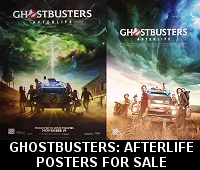

(Ghostbusters Amazon Store)

Please be aware that as an Amazon Associate, I earn a very tiny commission from purchases made though the Amazon links on this site.


|
COMMUNITY LINKS
NEWS • Ghostbusters Wiki • GB News • GB Fans • Ghostbusters Mania • GB Reboot Facebook • Proton Charging News Archive FORUMS • GB Fans • EctoZone OFFICIAL • Ghost Corps Facebook • Ghostbusters Facebook • Ghostbusters YouTube • Ghostbusters.com |

( MY COMPARISON REVIEW )
( AVOID SHIPPINGEASY/STAMPS.COM )
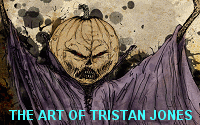
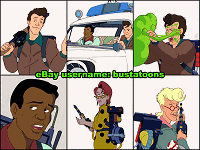
U.S. eBay (Ghostbusters stuff)
U.K. eBay (Ghostbusters stuff)

